Suesca, Colombia, the Birthplace of Colombian Rockclimbing and Part of the Legend of El Dorado
I have an extreme curiosity for myths and legends. I always think there is a little bit of truth inside the legend.
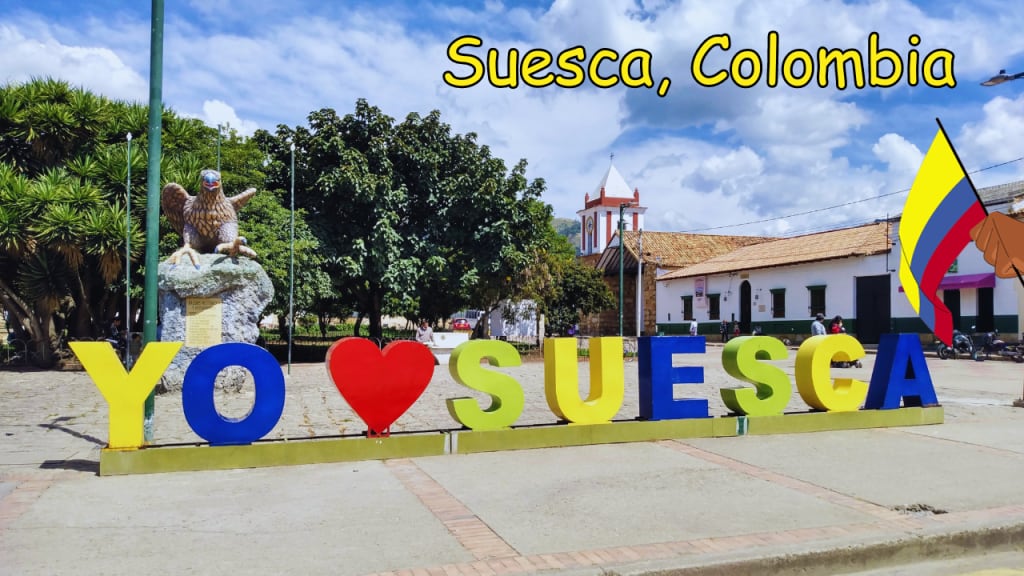
I see legends as the game of telephone; they started as accurate, yet as they travel through time, they become more exaggerated, bigger, and better. At least it makes a wild and crazy story.
It should come as no surprise that I unknowingly have ended up in a town that is part of the Legend of El Dorado. While traveling through Colombia in the spring, I intentionally searched for sacred sites and lakes.
What I found was peaceful communities surrounded by nature. The history of places is one thing that will keep me coming back for more, and even if I did not intentionally pick a place that is part of the legend, it chose me.
I am in Suesca, Colombia.
It is approximately 37 miles north of Bogotá and is a farming community and a haven for rock climbers, trekkers, and rafting. Suesca is derived from the Chibcha word Suejica, Suica, or Suesuca, which means ¨Rock of the birds¨.
In its early days, it was inhabited by nomadic hunters and gathers, as the rocks provided shelter. Before the Spanish Conquest, it was also part of the Muisca Confederation.
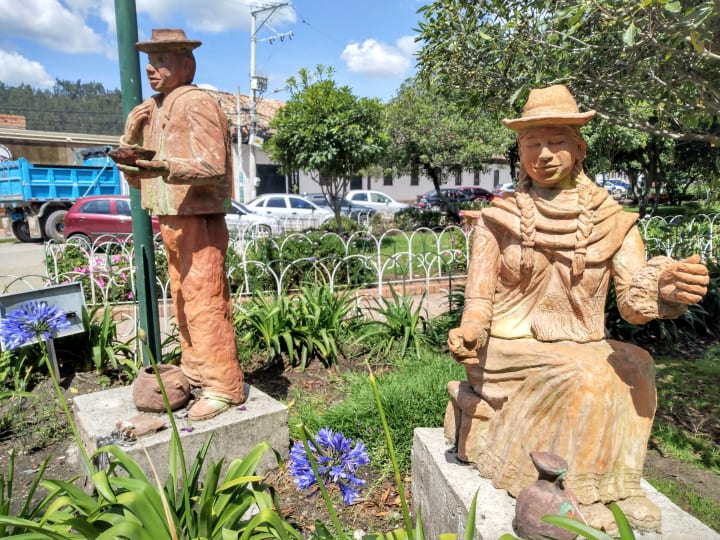
The chief of Guatavita, who was not far away, also ruled over Suesca. Guatavita has the sacred Lake Guatavita, and Suesca is home to Lake Suesca, where rituals were also held.
This is where many Spanish conquistadors believed gold was ¨thrown¨ into the lakes and searched them while searching for El Dorado.
The Legend of El Dorado refers to the search for a magical city made of gold. Yet it was never found, but the Spanish believed the Muiscas hid gold in the caves of the rock formations here in Suesca.

Suesca, at one time, was a central trading spot, as it was on the road to Boyacá. The merchants hauling coal and salt passed through this region on their way north. Every four days, a market was held in Suesca.
In 1602, in one of the caves, archeologists found 150 Muisca mummies; they were organized in a circle around the chief of the town. Since then, other mummies have been found, as well as gold, throughout the lands. Most of it has ended up in the Gold Museum in Bogotá; others believe farmers have found gold, melted it, and sold it.
The Rocas de Suesca are natural cliffs that are 2.5 miles long and are considered the birthplace of Colombian rock climbing. In front of the cliffs is a train track; on one side is the Bogotá River; on the other are the cliffs.
On the weekends, it is full of rock climbers from Bogotá.
Today, I went around the rocks and explored them; they are magical. When you look up, all you see is a cliff with some jagged rocks sticking out, making it a perfect spot for climbers to sit and enjoy the view after they reach one edge.
Today, I saw a group of kids learning to rock climb and another guy bouldering on a big rock. I weaved in and out of the trails next to the railroad tracks and found hidden tunnels and caves.
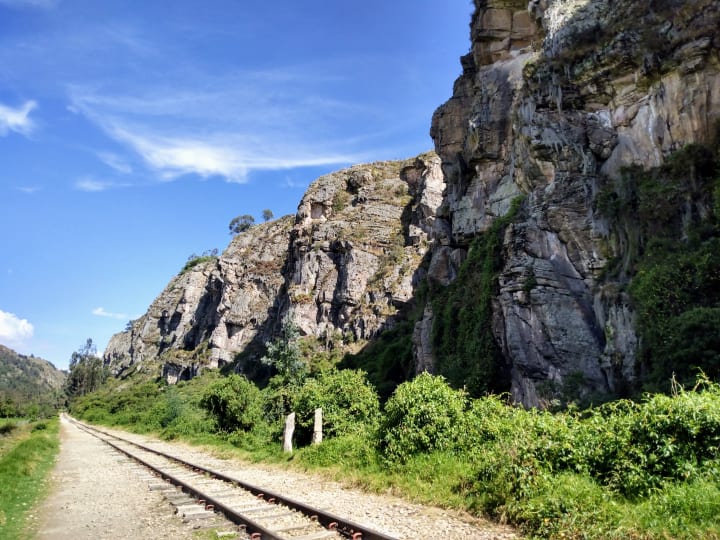
All I thought was how the Muiscas must have sat under there, guarding themselves from the winds and rains. One part looked perfect for a bed or table, maybe even making pottery.
I only walked for a mile or two along the rocks, but tomorrow, I will walk along the tracks to the next town over and explore some more. I read online that the train only goes at 6 am, but that was a lie; it passed me once as I walked.
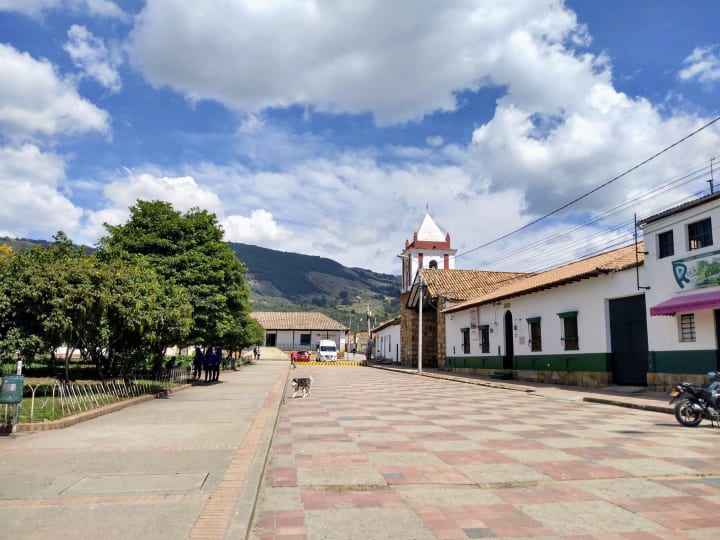
How to get to Suesca
If you plan a visit, head to the North bus terminal, and the buses leave every 15 minutes. It cost me 10 thousand pesos and took about an hour.
The pueblo is safe, and everyone will wave, or at least look at you, as you will probably be one of the only foreigners in town.
I stayed at a little hostel about a 15-minute walk into town and about 15 minutes from the rocks. Hostal Caminos de Suesca, I paid approximately 15 USD for a private room.
The owner speaks English and Spanish, but expect a few in town to speak English if you come. It is a small pueblo, and its primary income is farming, flowers, and tourism for rock climbing and extreme sports.
XOXO
S
About the Creator
sara burdick
I quit the rat race after working as a nurse for 16 years. I now write online and live abroad, currently Nomading, as I search for my forever home. Personal Stories, Travel and History
Enjoyed the story? Support the Creator.
Subscribe for free to receive all their stories in your feed. You could also pledge your support or give them a one-off tip, letting them know you appreciate their work.


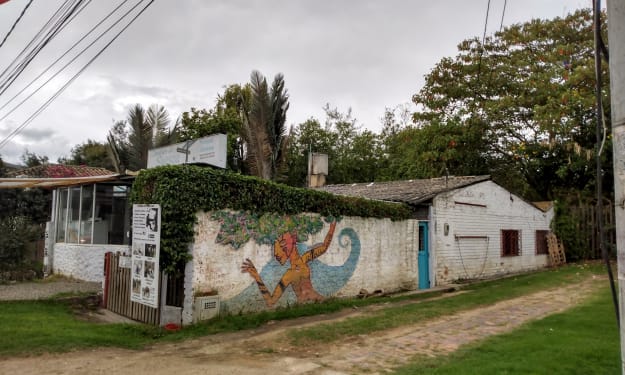


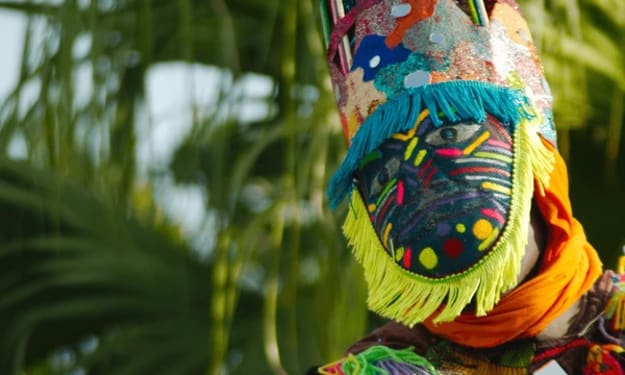
Comments
There are no comments for this story
Be the first to respond and start the conversation.